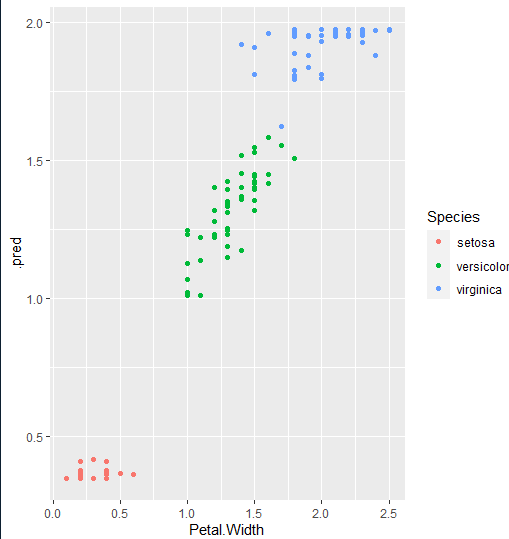My model was tuned and seems to work well, but now I'm not sure how to save it and re-apply it.
Min reprex: (made following this tutorial to generate and tune the model, and this article on saving the model with {yaml} and {tidypredict}, using iris data.).
library(tidymodels)
library(tidypredict)
library(yaml)
tidymodels_prefer()
#Initial split, generate training and testing
mysplit <- initial_split(iris %>% select(-Species), strata=Petal.Width)
training_set <- training(mysplit)
test_set <- testing(mysplit)
#Set up the model specification
#The hyperparameters will be tuned
xgb_spec <- boost_tree(
trees = 1000,
tree_depth = tune(),
min_n = tune(),
loss_reduction = tune(),
sample_size = tune(),
mtry = tune(),
learn_rate = tune()
) %>%
set_engine("xgboost") %>%
set_mode("regression")
#Set up a space-filling grid design to cover the hyperparameter space as well as possible
xgb_grid <- grid_latin_hypercube(
tree_depth(),
min_n(),
loss_reduction(),
sample_size = sample_prop(),
finalize(mtry(), training_set), #gets treated differently b/c it depends on actual # of predictors in data
learn_rate(),
size = 30
)
#Put the model specification into a workflow
xgb_wf <- workflow() %>%
add_formula(Petal.Width ~.) %>%
add_model(xgb_spec)
#Create cross-validation resamples for tuning the model
input_folds <- vfold_cv(training_set, strata=Petal.Width)
#Use tunable workflow to tune
doParallel::registerDoParallel()
xgb_res <- tune_grid(
xgb_wf,
resamples = input_folds,
grid = xgb_grid,
control = control_grid(save_pred = TRUE)
)
#Select the best parameters based on RMSE
best_rmse <- select_best(xgb_res, "rmse")
#Finalize the tuneable workflow using the best parameters
final_xgb <- finalize_workflow(
xgb_wf,
best_rmse
)
#############
#Fit the final best model to training set and evaluate the test set
final_res <- last_fit(final_xgb, mysplit)
#############
#Get the model-predicted values of the test set
pred_df <-
final_res %>%
collect_predictions() %>%
as.data.frame()
But now I'm a little confused on how to save this model so it can be re-run ? (I know normally there would be an extra re-training step on the entire dataset, which I'm skipping here).
parsed <- parse_model(extract_fit_engine(final_res)) #Is this right?
write_yaml(parsed, "my_model.yml")
loaded_model <- read_yaml("my_model.yml")
loaded_model <- as_parsed_model(loaded_model)
If this is correct, how would I fit it on the test set again? The same test set is fine as a toy. I thought it would be like this, but no luck:
loaded_model %>% fit(Petal.Width ~., data = iris)
Error in UseMethod("fit") :
no applicable method for 'fit' applied to an object of class "list"
